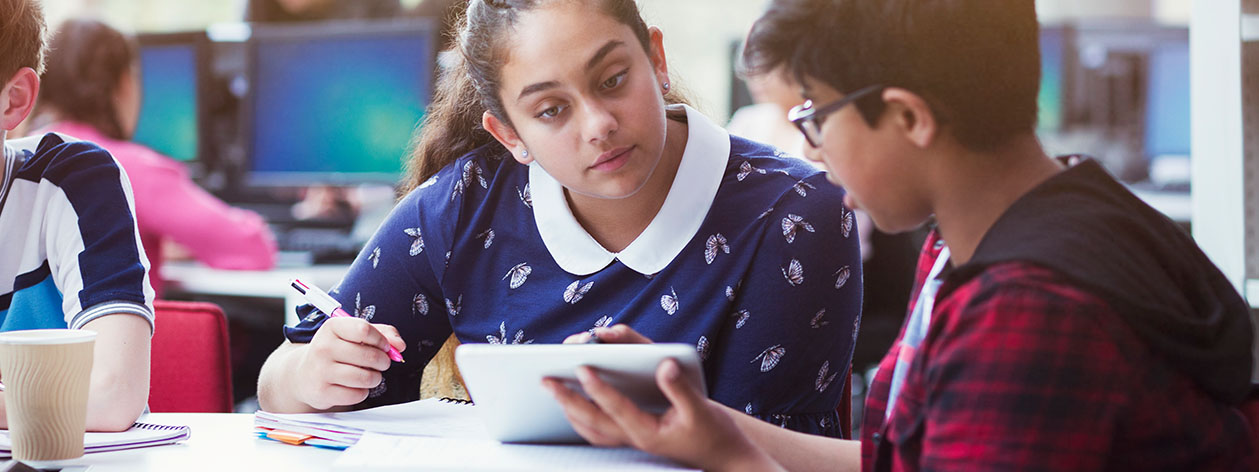
Case Studies
The challenge:
With students from all over the world, the Bellevue School District is an incredibly diverse district. More than 80 languages are spoken in the district, with over 30% of students speaking a first language other than English. A diverse student body includes family members too, who may not share a language with teachers or school staff, making school enrollment, teacher-parent conferences, meetings, and conversations with school staff a challenge.
The solution:
Chinook Middle School used Translator for PowerPoint paired with the Microsoft Translator app to caption and translate a live parent-teacher coffee. Faculty, staff, and parents were able to ask questions and engage with the overall community, and everyone was included in the conversation.
Learn how to set-up your own parent-teacher conference >
“He [Russell White, principal] shared that he typically has a Spanish, Korean and Mandarin translator at every meeting, and knows that while he cannot support every language that is spoken at his school, he can focus on the three most widely spoken languages. I told Mr. White that if we use the Microsoft Translator, we’d be able to accommodate numerous languages and dialects.” – Eric Ferguson, Director of Instructional Technology, Bellevue School District
Multilingual Parent Coffee
Watch how Chinook Middle School is using Microsoft Translator which has allowed faculty and staff to better engage with their student, parent, and family communities, making them a part of the conversation.
The challenge:
Deaf and hard of hearing students at RIT rely on an American Sign Language interpreting staff of over 140—the largest professional interpreting staff of any post-secondary institution in the world. The university also has over 50 captionists who transcribe lectures in real time to augment ASL interpretation. This may seem to be a high level of support for deaf and hard of hearing students, but interpretation is prioritized to cover core classes that these students need to graduate; many electives are not available to them because the demand for interpreters and captionists outstrips even RIT’s large staff.
The solution:
Developers at RIT’s Center on Access Technology used Translator and other Microsoft Cognitive Services APIs to take advantage of Microsoft’s advancements in AI. The Microsoft Speech Service includes Custom Speech, which adapts speech recognition to different vocabulary that it “learns” from a variety of text sources, including PowerPoint slides and notes, Word documents, etc.
Built around Translator, the solution combines a portal, an Automatic Speech Recognition cloud-based engine, and Translator for PowerPoint.
“If any students missed anything, they could glance up to see the visual and the text. Because the students can also receive captions on their laptops or smartphones, they can scroll back through the captions at their leisure to capture anything that they’ve missed. One of the great advantages to this approach is that students can access the information through multiple channels.” – Chris Campbell, Research Associate Professor, Center on Access Technology
RIT levels the playing field with AI for students who are deaf
RIT is renowned for graduating successful professionals who are deaf and hard of hearing. They account for over 8 percent of the school’s nearly 19,000 students. To best serve them, the National Technical Institute for the Deaf was established at RIT in 1967. Here, dedicated researchers—many of them deaf themselves—are working with Microsoft, using artificial intelligence and Microsoft Cognitive Services to develop a custom automatic speech recognition solution, making the world more accessible and inclusive for all students.
The challenge:
Jose moved into Onslow County Schools and enrolled in Jacksonville High School (JHS) as an English language learner, who spoke and understood very little English. Jose was enrolled in a physical science class where he quickly began to struggle due to the language barrier.
The solution:
The Digital Learning and Teaching Facilitator at JHS introduced Jose’s physical science teacher to Microsoft Translator. The teacher was provided a headset with microphone for her laptop.
During class, the teacher started a conversation using the Microsoft Translator mobile app and Jose would join the conversation at https://www.translate.it.
With the teacher using Microsoft Translator during class, Jose, equipped with headphones, joined in the conversation, listened to her instruction as it was translated into Spanish.
With the translation, Jose could begin to grasp the concepts being taught in the physical science class. As communication improved, Jose began to progress steadily in class. At the end of the semester, his teacher was nearly brought to tears as Jose completed and passed his final exam.
Learn how to use the Translator conversation feature in the classroom >
“Microsoft Translator is indeed a game changer, not only for students but for parents as well. With Microsoft Translator, school is now a less intimidating place for English language learners and parents.” – Denise Collins & Angie Conklin, Digital Learning and Teaching Facilitators, Onslow County Schools, North Carolina

Lectures & Presentations
Start using the Translator apps to translate and caption live presentations and engage students who are non-native speakers, deaf or hard of hearing, dyslexic, or having trouble taking notes.
LECTURES & PRESENTATIONS PAGE
Translated Conversations
The Translator app's multi-device conversation feature helps teachers better communicate with students in class or for one-on-one conversations.
LIVE CONVERSATIONS PAGE
Parent-Teacher Conferences
Engage parents and the school community by providing real-time language translation for parent-teacher conferences.
PARENT-TEACHER CONFERENCES PAGE



